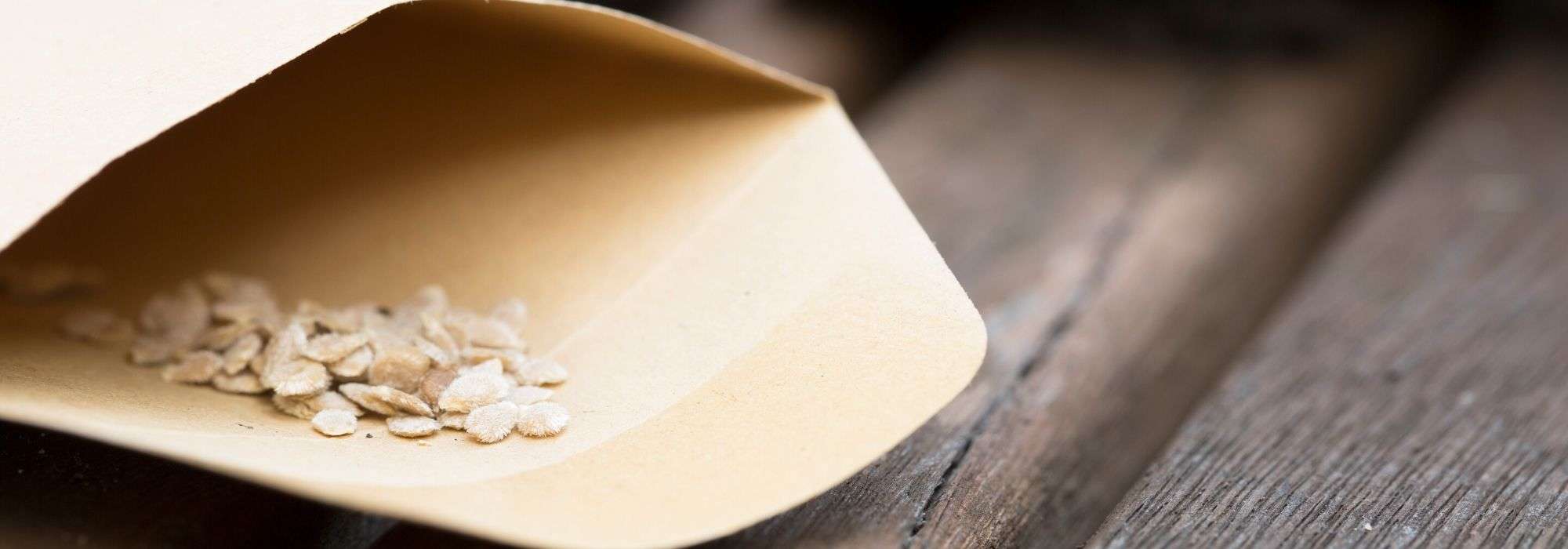
Storing vegetable seeds
How long? How?
Contents
Growing your vegetable garden brings a great deal of satisfaction, and harvesting your own vegetables after simply sowing seeds is almost magical! The problem is that gardeners quickly become hooked, and it’s not uncommon for them to give in to around ten varieties of tomatoes, courgettes, lettuces… Seeds that are often added to those they produce themselves! And, inevitably, not all these seeds are used within the year… Fortunately, most seeds keep well… but for how long? Under what conditions? Discover all our tips for successfully preserving vegetable seeds!
Why keep seeds?
Most obvious reason to keep your vegetable seeds is not having to buy them again next year. Indeed, it’s quite rare to use an entire packet of seeds and it would be a waste to sow more than your annual needs.
But that’s not all: properly storing your seeds also helps preserve seed varieties. Indeed, some vegetable varieties are passed on locally or from generation to generation: keeping seeds allows you to continue to grow those vegetables, particularly well adapted to your climate, even if they are not, or are scarcely, sold commercially.
Further reading on the subject :
- Saving seeds, harvesting them and storing them properly
- Vegetables: Organic seeds, F1 hybrids or conventional seeds… Which to choose?
How to store seeds?
Whether tomatoes, squashes, pumpkin, winter squash, red kuri squash or gourd, rules for storage are the same: seed storage should be in a cool, airy and dark place. To keep seeds intact, avoid humidity and light.
You can slip them into envelopes or make sachets that you then place in a box, in small glass jars if place is already dark. Don’t hesitate to use medicine tubes that contain, in their cap, a desiccant; they are specially designed not to absorb moisture.
A little more decorative, seed boxes consist of small drawers in which small paper sachets sit comfortably. They are handy because you can organise drawers by family (Solanaceae, root vegetables, leafy vegetables, etc.), or by plant associations. If used to planting carrot and onion together, why not place their seed sachets next to each other? Once sowing time arrives, simply pick seeds from drawers of your seed box for each of your vegetable beds.
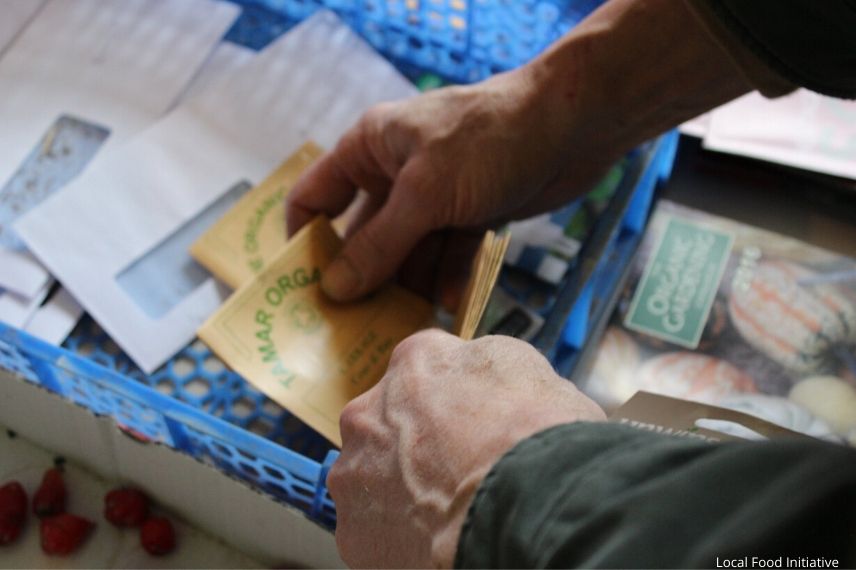
Seed storage in envelopes or sachets
Discover other Vegetable seeds
View all →Available in 1 sizes
Available in 1 sizes
Available in 1 sizes
Available in 1 sizes
Available in 1 sizes
Available in 1 sizes
Available in 1 sizes
Available in 1 sizes
Available in 1 sizes
Let's label!
To stay organised for upcoming sowings, it is crucial to label your seeds! For that, a single piece of sticky tape will do. Those of you with an artistic streak will enjoy adding little drawings. Whichever option you choose, make sure to specify vegetable name, its variety and its harvest date. To make things easier, write its expiry date on it. That way, no nasty surprises!
Read also
Thinning of sowingsShelf life of vegetable seeds
Seeds have a lifespan that varies widely: some seeds can patiently wait for years, such as Cucumber, while others, like Parsnip, keep for only one year. Here is a table summarising seed lifespan as well as germination time (time a seed takes to germinate after sowing). This information will be very useful if you need to carry out germination tests.
|
Vegetables |
Lifespan |
Germination |
| Aubergine | 6 years | 4 to 8 days |
| Artichoke | 7 years | 7 to 15 days |
| Basil | 4 to 8 years | 10 days |
| Chard | 5 years | 10 to 20 days |
| Beetroot | 6 years | 10 days |
| Broccoli | 4 to 5 years | 5 to 10 days |
| Cardoon | 5 to 7 years | 5 to 15 days |
| Carrot | 4 to 5 years | 10 to 20 days |
| Celery | 7 years | 10 to 20 days |
| Chicories | 8 to 10 years | 2 to 7 days |
| Brussels sprout | 5 to 6 years | 5 to 10 days |
| Chinese cabbage | 5 to 6 years | 5 days |
| Cauliflower | 5 to 6 years | 8 to 10 days |
| Kale | 5 to 6 years | 10 days |
| Cabbage | 5 years | 5 to 7 days |
| Kohlrabi | 5 years | 8 to 10 days |
| Cucumber | 10 years | 8 to 10 days |
| Gherkin | 10 years | 8 to 10 days |
| Squash | 4 to 6 years | 6 to 10 days |
| Courgette | 4 to 6 years | 6 to 10 days |
| Spinach | 4 to 5 years | 6 to 15 days |
| Fennel | 4 years | 8 to 10 days |
| Broad bean | 5 years | 8 to 30 days |
| Bean | 3 years | 5 to 8 days |
| Lettuce | 4 to 5 years | 4 to 10 days |
| Lamb’s lettuce | 5 years | 12 to 15 days |
| Maize | 2 years | 10 to 15 days |
| Melon | 7 years | 6 to 7 days |
| Turnip | 4 to 5 years | 4 to 7 days |
| Onion | 2 years | 20 to 25 days |
| Parsnip | 1 year | 10 to 25 days |
| Parsley | 3 years | 20 days |
| Chilli and pepper | 4 years | 10 to 15 days |
| Leek | 2 years | 10 to 20 days |
| Pea | 2 to 3 years | 6 to 15 days |
| Chickpea | 3 to 5 years | 6 to 8 days |
| Radish | 4 to 5 years | 3 to 5 days |
| Rutabaga | 3 to 4 years | 4 to 7 days |
| Salsify | 12 years | 8 to 10 days |
| Tomato | 4 to 5 years | 6 to 8 days |
Carry out a germination test
This is an operation that checks germination ability of your seeds. In short, to know whether they are still capable of germinating properly. The aim is simple: to check, before sowing them in soil or in a bucket, that your seeds are “fit”. These tests require sacrificing a few seeds but can save you valuable time!
How to carry out a germination test?
You will need :
- A paper towel, cotton wool or a damp cloth
- A spray bottle filled with water
- 6 seeds
- A bright, warm room
Steps :
- Spray water onto the paper towels so they are moist but not waterlogged
- Place them on a flat tray
- Cover with a second paper towel
- After several days (between 3 days and 3 weeks), your seeds should have germinated
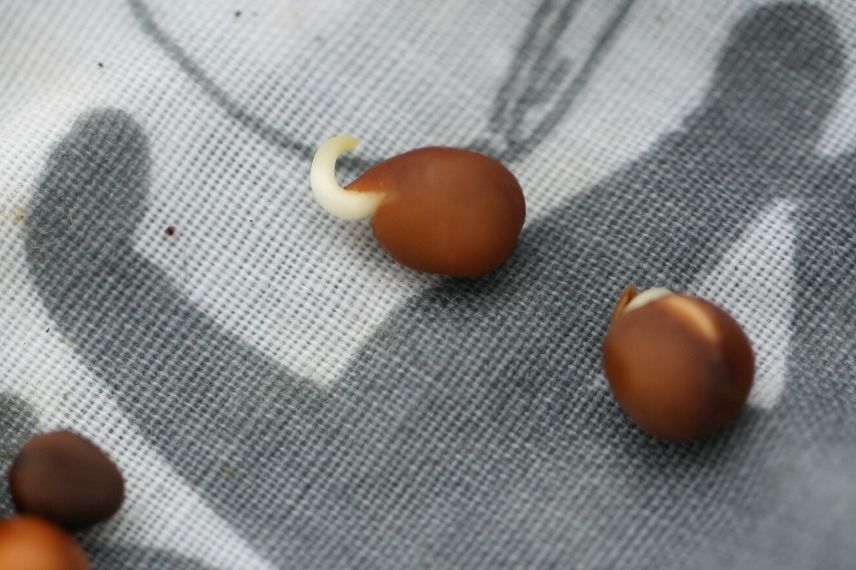
Pea seed germination test
Verdict
If all seeds have germinated, they are still perfectly viable. If only half or a little more have germinated, you can afford to sow them. However, you will probably need to sow twice as many. If fewer than three have germinated, the seeds are too old or have been poorly stored. In that case it is not worth sowing them, as you risk having very sparse ranks!
To read: Sowing of vegetable seeds
- Subscribe!
- Contents
































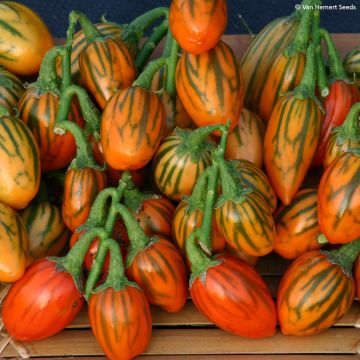
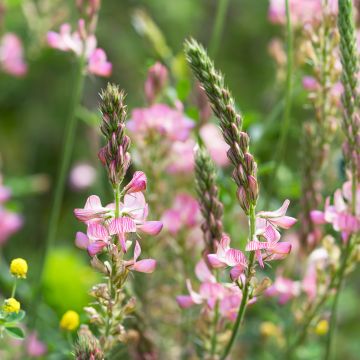


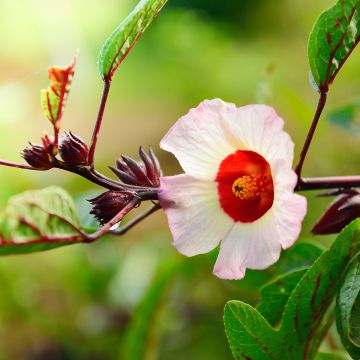
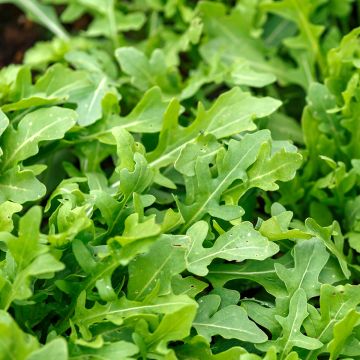
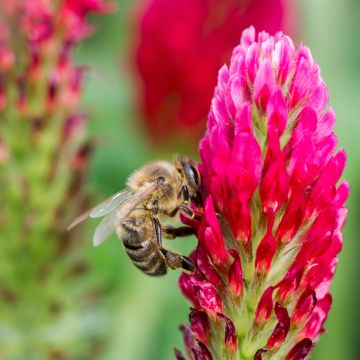


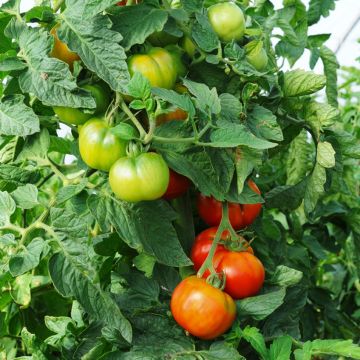
Comments